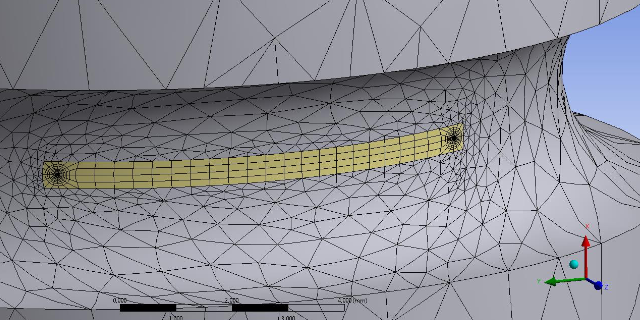
It is well known that the fatigue life of a structural component copes with the initiation and propagation of a crack. Under cyclic loading, a flaw may appear on the surface of the material and progressively grow until its size becomes critical. On the other hand, singularities introduced in the shape of a structure are preferential sites of crack initiation. This is due to the local stress increase that they provoke and, possibly, to the surface damage that machining could have caused. It is thus reasonably that these two circumstances are supposed to work together.
Several authors dealt with the issue of a notched round bar with a crack in the reduced cross-section. The Stress-Intensity Factors (SIFs) are deduced through a Finite Element (FE) approach, which can keep into account the influence of the notch on the crack. The fatigue propagation paths of the fracture can be determined by employing the Paris-Erdogan law.
The shape of the crack front changes after each cyclic loading step, according to the current values of the SIFs. The study of the subsequent configurations that the crack assumes during its evolution is a challenging task. Each advancement of the front entails an updating of the mesh, which can result annoying and rather time-consuming if led by hand.
Mesh morphing, that consists in the repositioning of nodal locations without changing the topology of the mesh, can be a meaningful answer to this problem as it allows the mesh updating without the need of rebuilding it from scratch. Fast Radial Basis Functions (RBF) can be used as an effective tool for enabling mesh morphing on very large meshes that are typically used in advanced industrial applications (many millions of nodes). The applicability of this concept is demonstrated in our project RBF4CRACKS project, funded by the University of Rome Tor Vergata within the programme “Consolidate the Foundations”
